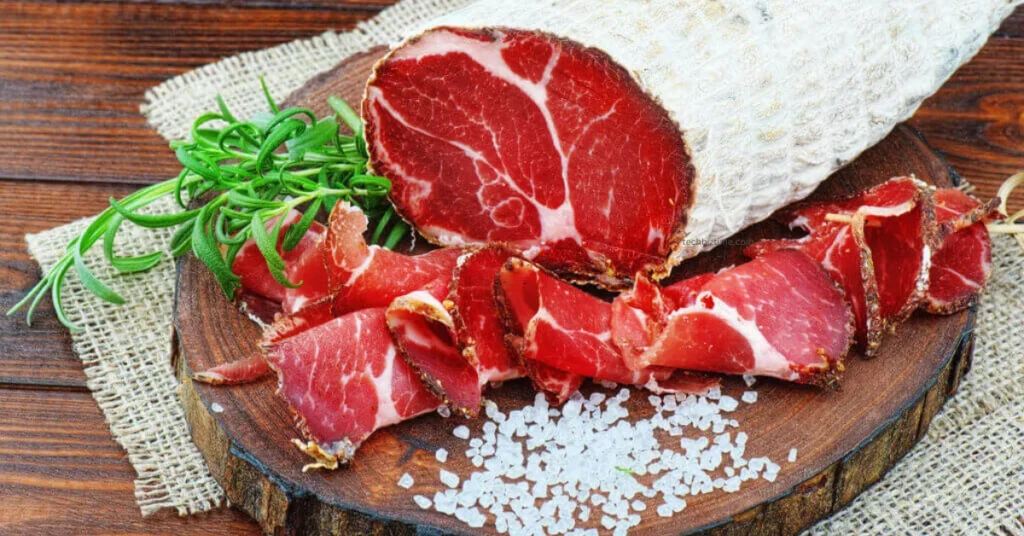Capicola and prosciutto are two of the most well-known kinds of salumi. Figure out how to separate between these traditional Italian meats whenever you’re studying cold cuts at the store or requesting an appetizer plate.
What Is Capicola?
Capicola, likewise referred to as coppa, capocollo, or even gabagool among New York’s Italian-American populace, is an Italian relief meat produced using pork shoulder and neck. It began in Piacenza in the north of Italy and the Calabria area in the south. Thus, the European Association has allowed both Coppa Piacentina and Coppa Calabrese Safeguarded Assignment of Beginning (PDO) status.
Basilicata, Lazio, Apulia, Tuscany, and Umbria additionally brag about their provincial assortments of capicola. Serve capicola in slender cuts, either all alone as a canapé or on processors and panini.
What Is Prosciutto?
Prosciutto is dry-restored meat produced using the rear leg of a pig. It began in Parma and San Daniele in northern Italy, procuring both prosciutto di Parma (or Parma ham) and prosciutto di San Daniele PDO status. Appreciate prosciutto in paper-meager cuts, either uncooked as prosciutto crudo, or cooked as prosciutto cotto.
Capicola versus Prosciutto: What Are the Distinctions?
Capicola and prosciutto are the two sorts of entire muscle salumi, a classification that incorporates other relieved meats like guanciale, pancetta, culatello, spot, and bresaola. So while you’re probably going to see the two kinds of restored ham on charcuterie sheets and shop subs, they vary in more ways than one.
1. Preparing: Ocean salt is the sole flavoring in prosciutto, which is characterized by the subtlety of its pungency. The rub utilized for capicola, in the interim, can incorporate a scope of flavors and flavors, from wine to fennel and red pepper.
2. Surface: Both capicola and prosciutto show up on charcuterie sheets in flimsy cuts, yet prosciutto is known for its rich surface because of its higher fat substance, while capicola is more delicate.
3. Value: Prosciutto will in general be more costly than Capicola since Prosciutto’s dry-relieving process requires around two years to finish, while Capicola’s takes just six.
How is Capicola Made?
While the particulars of the interaction shift as per provincial and individual inclinations, the essential restoring process for capicola involves preparing and dry-relieving pork neck and shoulder for as long as a half year.
1. In the first place, season the cut of meat (pork neck and shoulder) with garlic, spices, wine, and flavors.
2. Then, apply a salt rub and refrigerate the meat for as long as a little while.
3. Wash the salt off and the meat goes through one more round of preparation utilizing a rub produced using flavors like dark pepper, red pepper, fennel, aniseed, paprika, and coriander.
4. Stuff the carefully prepared meat into either collagen sheets or a characteristic packaging produced using a pig stomach.
5. Balance the frankfurters in a temperature-controlled room and evaporate the solution for to a half year.
How is Prosciutto Made?
The prosciutto-production process includes salting and evaporating a pig’s leg for up to three years.
1. Salt a pig’s rear leg and leave for a considerable length of time in a cool, dry spot.
2. Wash the salt off the meat, and afterward hang it in a cool, moist spot for somewhere in the range of sixty to ninety days.
3. Pass on the meat to dry for twelve to three years in a space that considers the most extreme airflow. The more extended the meat dries, the firmer the meat becomes.
Need to Look further into Cooking?
Improve as a cook with the MasterClass Yearly Enrollment. Get close enough to select video illustrations shown by the world’s ideal, including Aaron Franklin. Yotam Ottolenghi, Gabriela Cámara, Niki Nakayama, Gourmet expert Thomas Keller, Dominique Ansel. Gordon Ramsay, and Alice Waters, and that’s only the tip of the iceberg.
